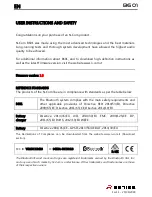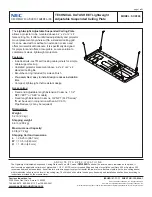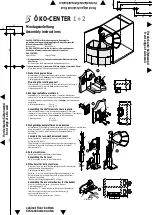
41
41
NOTE:
The evaporation rate (E) can
be determined by any one of the
following methods:
• The evaporation rate is
approximately 2 USGPM per 1
million BTUH of heat rejection.
• The evaporation rate is
approximately 3 USGPM per 100
tons of refrigeration.
• Evaporation Rate =
Q (USGPM) * R * 0.001.
NOTE:
Evaporation is proportional
to the load and will vary seasonally.
BAC includes a conductivity sensor
to maximize water conservation.
Bleed Line Calculations
: Bleed rate is determined by the following formula:
B = E
Where
: B = Bleed Rate (USGPM)
E = Evaporation Rate (USGPM) = Q (USGPM) x R (°F) x 0.001
Q = Process Fluid Flow Rate (USGPM)
R = Range
n = Number of Cycles of Concentration = CR/CM
CR = Concentration in Recirculating Water
CM = Concentration in Make-up Water
Given
:
• Nexus
®
Modular Hybrid Cooler
• Process Fluid Flow Rate = 300 USGPM
• Maximum Allowable Chloride Concentration = 250 ppm
• Concentration of Chlorides in Make-up Water = 45 ppm
• Range = 10°F
Find
: Bleed Rate
Solution
: So in this case,
E = Q * R * 0.001 = 300 * 10 * 0.001 = 3 USGPM
n = CR = 250 ppm = 5.55
B = E = 3 USGPM = 0/66 USGPM
(n-1)
CM
45 ppm
(n-1)
(5.55-1)
Therefore, in this case we must bleed approximately 0.66 USGPM to limit the
concentration of impurities.
This example focuses on a single parameter (chloride concentration) of water only. The
bleed rate required for a system (when evaluating more than one parameter) is the highest
bleed rate required to keep all parameters within recommended limits.
Bleed Rate
Example to Estimate Bleed
Rate
Example to Estimate Bleed Rate
















































